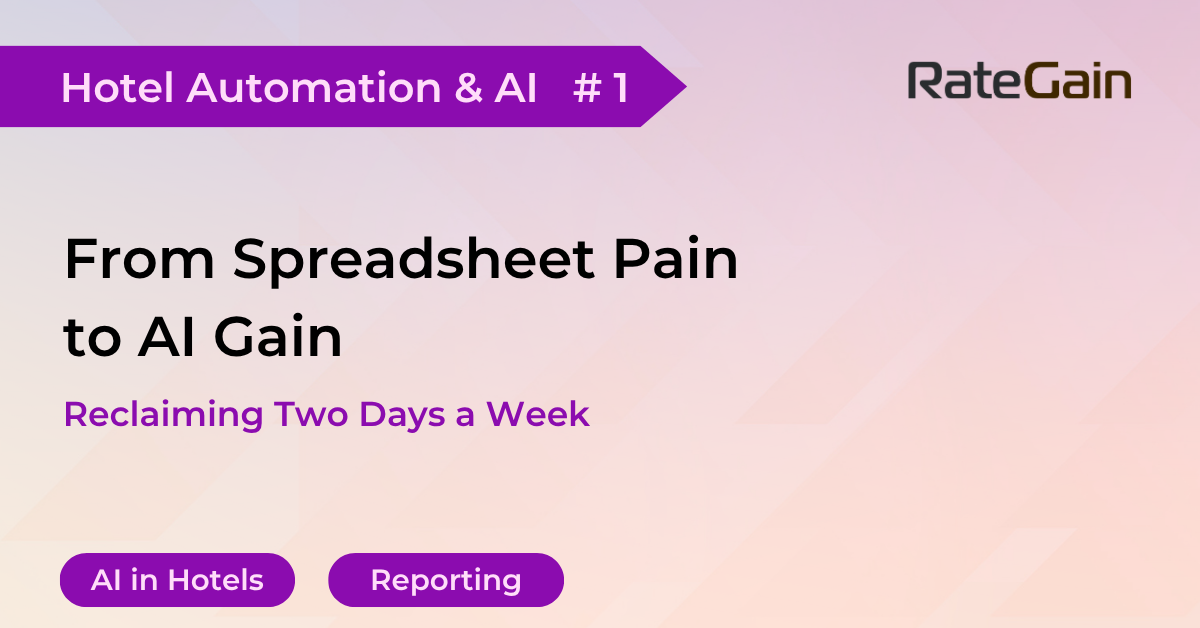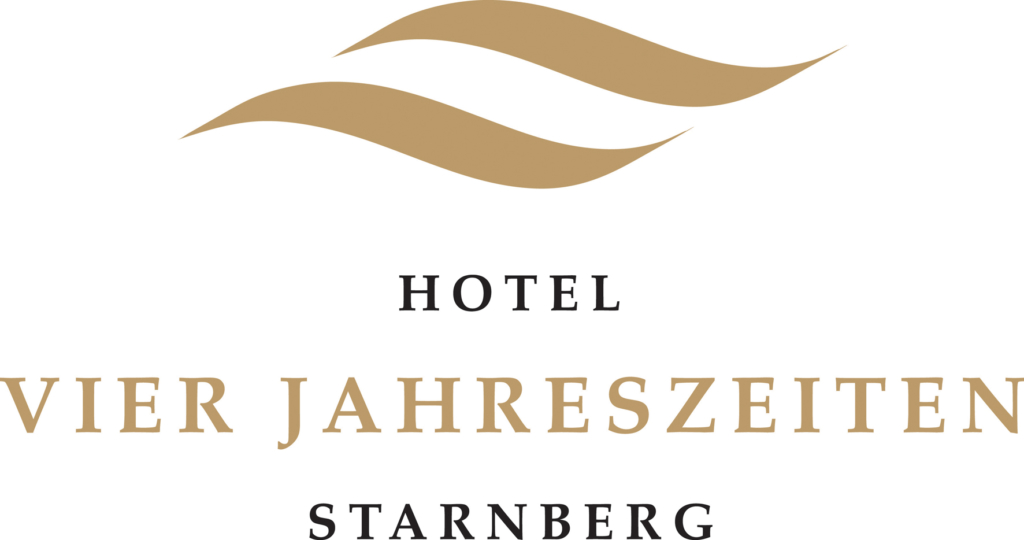Hotel teams sit on more data than ever, yet most still live inside a maze of CSV exports and color‑coded cells. The result is slow insights, slower decisions, and staff burnout.
Stat check: Four in five hotels devote one – two full work‑days each week to producing or analyzing spreadsheets, while only 15 percent enjoy fully hands‑free reporting.
These figures come from The State of Distribution 2025, an annual hotel technology benchmark, born from the collaboration between HEDNA, RateGain, and NYU SPS, that captures operational realities at more than 700 hotel brands, representing 21,000+ properties and spanning 310 cities.
In this post, you’ll learn how to:
- calculate the hidden opportunity cost of manual reporting,
- make your core data “AI‑ready,”
- deploy a lean PMS + RMS + BI stack in 30 days, and
- guide teams through the cultural shift from Excel to automation.
The Hidden Cost of Manual Reporting
Even modest‑sized properties now juggle dozens of distribution channels, rate plans, and promo codes. When those numbers must be reconciled by hand, time, focus, and margin evaporate before you even open today’s pickup report.
It Is Not “Just an Hour Every Morning”
- Time tax: Up to two days every single week vanish into copy‑paste loops.
- Strategic lag: Distribution teams review reports only 34 percent as often as revenue managers because assembly takes so long.
- Opportunity debt: Slow parity alerts, stale channel‑mix data, and missed upsell experiments erode revenue.
If your salaried analysts average USD 35 per hour, those 16 lost hours cost roughly USD 2,240 per month for a 100‑room hotel—before counting missed revenue moves.
What “AI‑Ready” Data Really Means
Before a single algorithm can optimize rates or spot parity breaches, the underlying data must be structured, synchronized, and trustworthy. Think of this as removing the sand from your engine before adding a turbocharger.
| Trait | Why It Matters | Five‑Minute Diagnostic |
|---|---|---|
| Consistent property codes | Cross‑join PMS, CRS, and OTA data without lookup sheets. | Can you reconcile a PMS room type to an OTA listing instantly? |
| Real‑time availability feed | Predictive models fail on stale inventory. | Does your CRS publish availability changes in < 3 min? |
| Normalized rate plans | Machine learning cannot guess that “BAR Flex” = “Standard.” | Count active rate codes for Best Available. |
| Unified time zones & currencies | Mixed units scramble features. | Spot‑check ADR fields for stray currency symbols. |
Pro tip: Schedule a one‑off, four‑week data‑hygiene sprint before any AI rollout—the time you save later will dwarf the effort.
Quick‑Start Stack: PMS + RMS + BI
You do not need a seven‑figure digital core to halve manual effort. Instead, focus on building what we call a three‑box spine, and let integration trump innovation every step of the way.
- Cloud PMS with open APIs (e.g., Cloudbeds, Mews).
- Revenue‑management system ingesting PMS reservations plus comp‑set rate shops.
- Business‑intelligence layer (Looker, Tableau, or Power BI) fed automatically by both.
Why this phased path works:
- Integration first, AI later. Over half of hotels now run some preset dashboards, yet only 15 percent enjoy fully automated reporting—proof that a crawl‑walk‑run approach prevails.
- Built‑in ML hooks. Modern PMS webhooks can stream clean data to BigQuery ML or light Python jobs without extra middleware.
- Future‑proofing. Once the spine is healthy, plug‑ins like parity crawlers, chatbot logs, or intent data flow naturally.
Crucially, the report shows AI tools rank last on the near‑term shopping list; leadership wants to “fix, first; then, fill.”
Change‑Management Checklist for General Managers
Technology alone rarely changes habits. To ensure your new dashboards turn into decisions—not just screensavers—follow this human‑first roll‑out plan.
- Map pain to people. Attach each automation feature to hours saved for night audit, revenue, or marketing.
- Automate one KPI at a time. Start with occupancy‑forecast accuracy before layering RevPAR blends.
- Replace weekly PDFs with a live stand‑up. A 15‑minute dashboard huddle forces adoption.
- Reward insight, not creation. Celebrate staff who turn an automated alert into a pricing or channel action.
Remember: fewer than one in five hotels own purpose‑built reporting tools today—skills training often matters more than software licenses.
Where to Go Next
This post skims a fraction of the findings from the State of Distribution 2025 benchmark report. Download the full report to benchmark your reporting burden against 700 brands in 310 cities, and chart your next automation move.
 Deutsch
Deutsch Português
Português Italiano
Italiano Espanol
Espanol čeština
čeština ไทย
ไทย Français
Français



